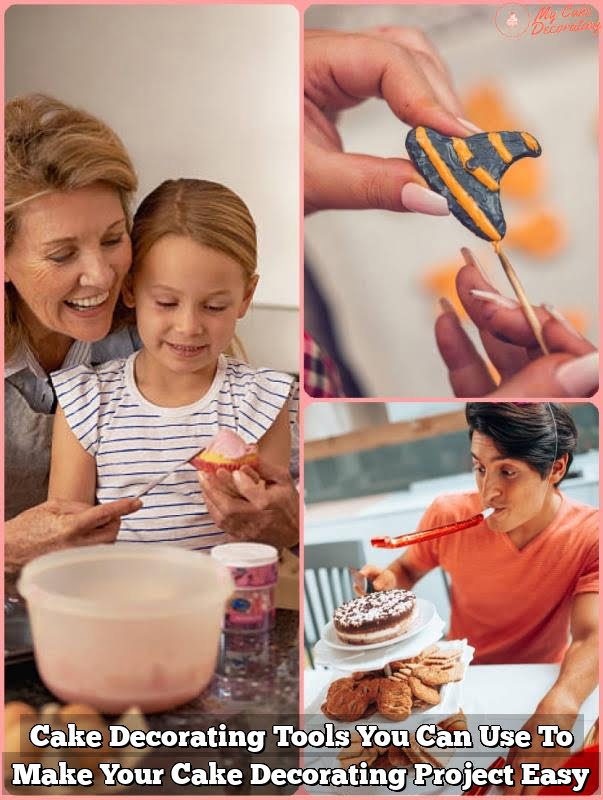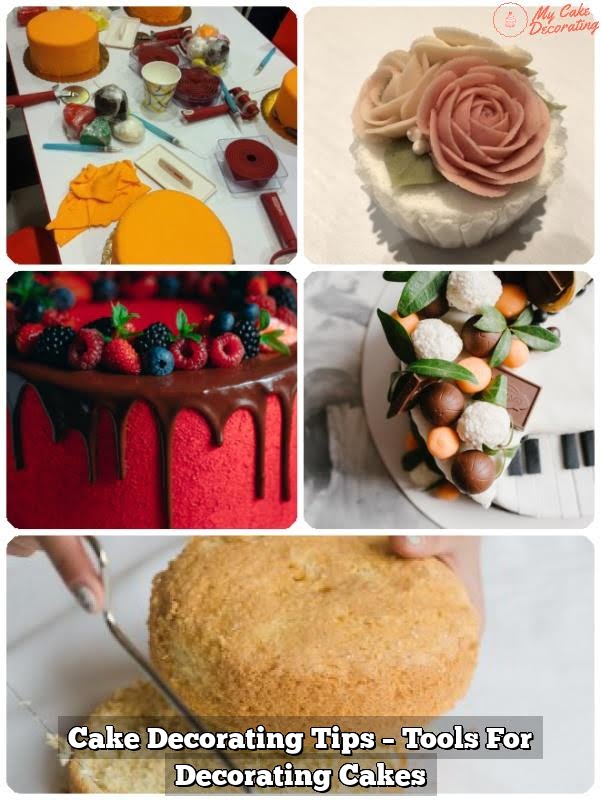Cake Decorating Rosettes – the intricate and beautiful designs that can take a plain cake to a work of art. These delicate and versatile decorations are the perfect addition to any cake, adding a touch of elegance, sophistication, and creativity. Whether you’re a professional baker or a home enthusiast, learning the art of creating stunning rosettes will elevate your cake decorating skills to new heights.
Cake decorating rosettes have a rich history that spans from ancient times to modern trends. Dating back centuries, these intricate designs were used to mark celebrations,.
weddings, and special occasions. Over time, different cultures have developed unique styles and techniques for creating rosettes on cakes, making them an integral part of diverse culinary traditions.
Creating beautiful rosettes requires essential tools and supplies that every aspiring cake decorator should have in their arsenal. From piping bags and tips to various icing colors to achieve vibrant hues,.
these tools will aid in achieving flawless results. Additionally, understanding the step-by-step process is vital for mastering the art of creating rosettes.
In this article, we will explore different techniques such as piping, swirls, and roses – providing you with a comprehensive guide on various styles of cake decorating rosettes. Furthermore, we’ll delve into customizing rosettes with edible decorations and embellishments so that you can add your personal touch to each creation.
By incorporating rosettes into your cake designs as tiers, borders, or centerpieces, you can unlock endless possibilities for creative expression. We’ll provide you with inspiring examples showcasing stunning cake designs featuring rosettes so that you can gain inspiration for your own unique creations.
So whether you’re just starting out or looking to expand your repertoire as a seasoned baker, this article has something for everyone. Let’s dive into the enchanting world of cake decorating rosettes and discover how they can transform any ordinary cake into a masterpiece.
The History of Cake Decorating Rosettes
Cake decorating rosettes have a rich history that dates back to ancient times. The art of creating beautiful designs on cakes has been practiced for centuries, with cake decorators continuously pushing boundaries and exploring new techniques. In this section, we will delve into the fascinating history of cake decorating rosettes and how they have evolved over time.
In ancient civilizations such as Egypt and Rome, cakes were often adorned with intricate patterns and decorations. These early cake decorators utilized simple tools like sticks or feathers to create designs on their confections. As time progressed, the art of cake decorating became more refined, and various cultures developed their own distinct styles.
During the Renaissance period in Europe, cake decoration reached new heights of intricacy and elegance. European bakers started using piping bags made from animal bladders to pipe frosting onto cakes, allowing them to create more detailed and precise designs. This innovation laid the foundation for the modern techniques used in cake decorating today.
In the 19th century, cake decorating became increasingly popular among the middle class. Elaborate molds were introduced that allowed bakers to create three-dimensional shapes and figures on their cakes. This era also saw the introduction of royal icing, a smooth and glossy frosting that was perfect for creating intricate rosette designs.
Today, cake decorating rosettes are experiencing a resurgence in popularity thanks to modern trends and techniques. Bakers are constantly finding new ways to incorporate rosettes into their designs, whether it be by experimenting with different piping nozzles or combining them with other decorative elements like edible flowers or gold leaf.
Throughout history, cake decorators have been captivated by the beauty and versatility of rosettes. From simple stick patterns to elaborate piped roses, these delicate decorations continue to add a touch of elegance and sophistication to any cake design. In the next section, we will explore essential tools and supplies needed to create stunning cake decorating rosettes.
Essential Tools and Supplies for Creating Stunning Cake Decorating Rosettes
Selecting the Right Piping Tips
When it comes to creating stunning cake decorating rosettes, having the right piping tips is essential. There are a variety of tip sizes and shapes available, each producing a unique effect. To create larger and more dramatic rosettes, use a large open star tip such as the Wilton 1M or Ateco 828. For smaller and more intricate designs, opt for smaller round tips like the Wilton 12 or Ateco 804.
Piping Bags
To pipe your rosettes, you’ll need piping bags. Disposable plastic piping bags are convenient and easy to use, but if you prefer a more eco-friendly option, reusable fabric piping bags are a great alternative. Whichever type you choose, make sure they’re clean and dry before use. Cut the bag to accommodate your chosen piping tip – for example, if using an open star tip, cut about an inch from the end of the bag.
Icing Consistency: Stiff vs. Soft
The consistency of your icing plays a crucial role in achieving perfect rosettes. The ideal consistency will vary depending on personal preference and weather conditions, but generally speaking, stiffer icing holds its shape better for intricate designs while softer icing is easier to handle for larger rosettes.
To achieve a stiff consistency, add powdered sugar gradually to your buttercream frosting until it reaches the desired thickness. If you prefer a softer consistency, add small amounts of milk or cream and mix until smooth and slightly runny.
Offset Spatulas and Turntables
Offset spatulas are handy tools for smoothing out frosting before piping your rosettes. They allow for precise control, creating an even surface that serves as a canvas for your beautiful designs. Turntables are also invaluable when it comes to decorating cakes. They provide ease of rotation, allowing you to pipe your rosettes evenly and smoothly without straining your wrists.
Other Supplies
In addition to the essential tools mentioned above, there are a few other supplies that can enhance your cake decorating experience. A cake leveler or serrated knife will help you achieve flat and even cake layers, ensuring a stable surface for decorating.
Parchment paper or wax paper can be used to practice piping your rosettes before applying them directly to the cake. And finally, an assortment of food coloring gels or powders will allow you to create vibrant and customized colors for your rosettes.
By investing in quality tools and supplies, you’ll be well-equipped to create stunning cake decorating rosettes and elevate your cake designs to the next level.
Step-by-Step Guide
Creating beautiful rosettes on cakes may seem like a daunting task, but with the right techniques and practice, anyone can master this art. Follow this step-by-step guide to learn how to create stunning rosettes that will elevate your cake decorating skills.
Step 1: Prepare Your Piping Bag
- Start by fitting a piping bag with a large star tip. This tip will give your rosettes the desired shape.
- If you want to use different colors for your rosettes, consider using disposable piping bags or couplers to easily switch between colors.
- Scoop your desired frosting into the piping bag and twist the open end to secure the frosting inside.
Step 2: Create a Stable Base
- Before creating your rosettes, it’s essential to have a stable base for them to sit on. Frost your cake with a smooth layer of buttercream or fondant.
- This base will not only provide support for your rosettes but also act as a cohesive element in your overall design.
Step 3: Begin Piping Your Rosettes
- Hold the piping bag at a 90-degree angle above the surface of the cake.
- Squeeze the piping bag while moving in a circular motion, starting from the center and moving outward.
- Continue this motion until you have created a complete circle. Release pressure on the bag and pull away gently to form the peak of the rosette.
Remember, practice makes perfect when it comes to creating beautiful rosettes on cakes. Experiment with different frosting consistencies, tip sizes, and techniques until you find what works best for you. With time and patience, you’ll be able to create stunning rosettes that will impress your friends and family.
Exploring Different Techniques
Introduction to Different Techniques of Rosettes
When it comes to cake decorating rosettes, there is a wide range of techniques that can be used to create stunning designs. Each technique provides a unique and beautiful style, allowing decorators to bring their creativity and personal touch to their cakes. In this section, we will explore three popular techniques: piping, swirls, and roses.
Piping Rosettes: A Classic Technique
Piping rosettes is a classic technique that has been used for centuries in cake decorating. It involves using a piping bag fitted with a star-shaped tip to create beautiful rosette shapes on the cake’s surface. This technique is versatile and allows decorators to vary the size and style of the rosettes by simply adjusting the pressure applied when squeezing the piping bag.
To pipe rosettes, start by holding the piping bag perpendicular to the cake’s surface. Apply even pressure as you squeeze out the buttercream or frosting in a circular motion starting from the center and working your way outward. It’s important to maintain consistent pressure throughout each rosette for uniformity in size and shape.
Swirls and Roses: Adding Elegance and Dimension
Swirls and roses are two other popular techniques for creating intricate designs with rosettes. Swirls involve creating overlapping loops using a star-shaped tip, which gives a swirling effect that adds elegance and depth to cakes. To achieve this technique, hold the piping bag at an angle while applying even pressure as you move your hand in a fluid motion.
Roses, on the other hand, are more complex but yield stunning results. With this technique, decorators use a petal tip instead of a star-shaped one. The process involves creating individual petals around a central point by piping in an upward motion while slightly rotating the wrist. Layering these petals creates a beautiful rose design that can be the centerpiece of any cake.
By exploring different techniques such as piping, swirls, and roses, decorators can add variety and dimension to their rosette designs. Whether opting for classic piping or elevated elegance with swirls and roses, these techniques allow for endless creativity and customization in cake decorating.
Adding a Personal Touch
Rosettes on cakes serve as not only a visually stunning decorative element but also as a canvas for creativity. With the ability to customize rosettes with edible decorations and embellishments, cake decorators can truly make their creations unique and personalized. Adding these finishing touches can elevate the overall design of the cake and make it even more memorable.
When it comes to customizing rosettes, there are countless options available. One popular choice is to use edible glitter or shimmer dust. These products add a touch of sparkle and glamour to the rosettes, making them appear more festive and celebratory. Another option is to use edible pearls or dragees, which can be placed in the center of each rosette for an elegant look.
For those looking to add a pop of color or texture, edible flowers are a fantastic choice. Fresh flowers such as roses, daisies, or orchids can be used to create a beautiful contrast against the buttercream or fondant rosette swirls. Alternatively, sugar flowers or fondant decorations in various shapes and colors can be created specifically for the cake design.
Furthermore, piping gel can be used to create different effects on rosettes. This transparent gel can be tinted with food coloring and applied using various techniques such as painting or dripping onto the rosettes. This creates a glossy effect that adds depth and dimension to the design.
| Edible Decoration | Description |
|---|---|
| Edible Glitter | Adds sparkle and glamour |
| Edible Pearls or Dragees | Elegant addition for center of rosettes |
| Fresh Edible Flowers | Creates contrast and adds color |
| Sugar Flowers or Fondant Decorations | Custom-made decorations for cake design |
| Piping Gel | Creates glossy effect and adds dimension |
Creative Ideas for Incorporating Rosettes into Your Cake Designs
Cake decorating rosettes are not only a beautiful addition to any cake, but they also offer endless creative possibilities. Whether you are a professional pastry chef or an amateur baker, incorporating rosettes into your cake designs can take your creations to the next level. In this section, we will explore some creative ideas for using rosettes as tiers, borders, and centerpieces.
One popular way to incorporate rosettes into cake designs is by creating tiered cakes. Tiered cakes add an elegant and sophisticated touch to any celebration. By piping rosettes onto each tier, you can create a stunning focal point that will impress your guests.
You can choose to pipe the rosettes in a uniform pattern or mix different sizes and colors for a more whimsical look. Additionally, adding edible decorations such as pearl sprinkles or edible flowers between the tiers can further enhance the beauty of the design.
Another creative idea is to use rosettes as borders on your cakes. The border serves as a frame for your cake and adds visual interest. Piping small rosettes all along the edge of the cake gives it a delicate and intricate look.
You can experiment with different piping tips to create variations in size and texture. For example, using a star tip will give your rosette border a more defined shape, while using a round tip will create softer and more delicate-looking flowers.
Lastly, rosettes can be used as eye-catching centerpieces on your cakes. By placing one or more larger-sized rosettes in the center of the cake, you instantly draw attention to that area. This works especially well for single-tier cakes or smaller desserts like cupcakes. To make your centerpiece really stand out, consider adding additional embellishments such as edible glitter or gold foil accents.
Incorporating rosettes into your cake designs allows you to showcase your creativity and craftsmanship. Whether you choose to use them as tiers, borders, or centerpieces, rosettes are sure to elevate the visual appeal of your cakes and make them truly unforgettable.
| Idea | Description |
|---|---|
| Tiered Cakes | Create a stunning focal point by piping rosettes onto each tier of a cake. Mix different sizes and colors for added visual interest. |
| Rosette Borders | Add a delicate and intricate frame to your cake by piping small rosettes all along the edge. Experiment with different piping tips for variations in size and texture. |
| Centerpiece Rosettes | Draw attention to the center of your cake by placing one or more larger-sized rosettes as eye-catching centerpieces. Add additional embellishments for added flair. |
Troubleshooting Common Issues
Creating beautiful cake decorating rosettes can sometimes be challenging, but with the right tips and tricks, you can achieve perfectly executed rosettes every time. In this section, we will explore some common issues that arise when creating rosettes and provide helpful solutions to overcome them.
One common issue when piping rosettes is uneven sizing. It can be frustrating when your rosettes turn out different sizes, especially if you are aiming for a cohesive design. To achieve consistency in sizing, it’s important to maintain consistent pressure on the piping bag as you pipe the swirls. Additionally, practicing on a separate surface before piping directly onto the cake can help you gauge the amount of pressure needed for each rosette.
Another challenge that may occur is the collapsing or drooping of rosettes. This issue can often be attributed to improper frosting consistency or technique. If your frosting appears too soft or runny, it may not hold its shape as well and cause the rosettes to collapse.
To avoid this problem, make sure your frosting has a stiff consistency by gradually adding powdered sugar until it reaches the desired thickness. Additionally, starting with small swirls at the base and gradually increasing in size as you pipe upwards can help create more stable and upright rosettes.
Lastly, air bubbles can sometimes appear within the rosette design, resulting in an imperfect finish. These air bubbles can occur if there are gaps between layers of frosting or if air pockets form while piping. One way to combat this is to ensure that each layer of frosting is applied smoothly and evenly before piping the next layer. Another technique is to tap the cake gently on a flat surface after piping each layer to release any trapped air bubbles.
By following these troubleshooting tips and tricks, you will be able to create perfectly executed rosettes every time. Remember that practice makes perfect, so don’t get discouraged if you encounter any challenges along the way. With patience and perseverance, you will soon master the art of creating stunning rosettes on your cakes.
Inspiring Examples
One of the best ways to truly appreciate the beauty and versatility of cake decorating rosettes is by exploring a showcase of stunning cake designs that feature these intricate decorations. From weddings to birthdays, rosettes can elevate any cake design and make it truly unforgettable. Here are some inspiring examples to spark your creativity and help you envision how rosettes can enhance your own cake creations.
Firstly, let’s look at wedding cakes, where rosettes are often used to add an elegant and romantic touch. A popular design choice is a tiered cake adorned with cascading rosettes in various sizes and colors. This creates a visually stunning effect that is both sophisticated and eye-catching. Another impressive option is a cake with a single oversized rosette as the centerpiece, surrounded by smaller rosettes or other complementary decorations.
For birthday cakes, rosettes can be used to create playful and whimsical designs. Imagine a bright and cheerful cake covered in vibrant colored buttercream rosettes, perfect for a child’s birthday celebration. Alternatively, for a more sophisticated adult birthday party, consider using pastel-colored or metallic rosettes arranged in an ombre pattern for an elegant and trendy look.
Rosettes can also be incorporated into other types of celebrations or themed events. For example, for a baby shower or gender reveal party, try using soft pastel-colored rosettes in blue or pink tones to create adorable cakes that match the theme perfectly. For holiday celebrations like Easter or Christmas, you can decorate cakes with white buttercream rosettes resembling snowflakes or flowers for a festive touch.
Conclusion
Cake decorating rosettes have a rich history that dates back to ancient times, but they have remained a popular and timeless trend in cake design. As we have explored in this article, creating stunning rosettes on cakes requires essential tools and supplies, as well as mastering the step-by-step techniques involved. However, the true beauty of rosettes lies in their versatility and ability to be customized, making them a perfect addition to any cake.
By incorporating different piping techniques such as swirls and roses, you can create a variety of styles with rosettes that suit any occasion or theme. Additionally, adding edible decorations and embellishments allows you to personalize your rosettes further and make them truly unique. Whether you are designing tiers, borders, or centerpieces for your cake, rosettes can be creatively incorporated to elevate the overall appearance.
While mastering the art of creating beautiful rosettes may take some practice, troubleshooting common issues and implementing tips and tricks can help ensure perfectly executed designs every time. It is important to remember that practice makes perfect when it comes to cake decorating, so don’t be discouraged if your first attempts aren’t flawless.
Finally, we showcased inspiring examples of stunning cake designs featuring rosettes throughout this article. These examples serve as a testament to the beauty and elegance that rosettes can bring to any cake creation. By embracing the artistry behind cake decorating with rosettes, you can elevate your skills and make your creations truly unforgettable.
In conclusion, by incorporating cake decorating rosettes into your designs, you can take your cake decorating skills to new heights. With their rich history and versatility in design options, rosettes are a timeless trend that adds elegance and beauty to any cake. So whether you are a professional baker or someone who simply wants to create stunning desserts for special occasions, consider adding rosettes as an essential element in your repertoire of techniques.
Frequently Asked Questions
What is the best piping tip for rosette cake?
The best piping tip for creating rosettes on a cake would be a closed star tip, such as the Wilton 2D or 1M. These tips have a series of grooves that create beautiful textured rosettes with defined edges.
The closed star design helps to hold the shape of the rosette and gives it a fuller appearance. Additionally, these tips are versatile and can be used to create other designs like shells and ruffles, making them a great investment for any cake decorator.
How do you make rosettes on a cake?
To make rosettes on a cake, start by attaching the desired piping tip onto a piping bag filled with buttercream frosting. Hold the bag at a 90-degree angle above your cake and gently squeeze while applying pressure evenly. Begin in the center of where you want your rosette to be placed and pipe in clockwise or counterclockwise circles, continuously overlapping each layer until you reach the desired size for your rosette.
Release pressure on the bag and pull straight up, ending in a slight flicking motion to create a defined peak on top of the rosette. Repeat this process to create as many rosettes as needed, spacing them evenly across your cake.
How to make a perfect rosette?
Making perfect rosettes requires practice and attention to detail. First, ensure that your buttercream frosting is at the right consistency – not too stiff or too runny – as this will impact how well your rosettes hold their shape. It’s important to maintain steady pressure on the piping bag while creating each layer of the rosette, as inconsistent pressure can result in uneven petals or loose structures that do not hold their form.
Take care to overlap each layer slightly so that they adhere together seamlessly for a cohesive look. Pay attention to uniformity in size by visually estimating or using guidelines like placing dots on your cake beforehand to guide each rosette’s placement. Overall, practicing consistency and precision will help you achieve perfect rosettes.

Welcome to my blog about home and family. This blog is a place where I will share my thoughts, ideas, and experiences related to these important topics. I am a stay-at-home mom with two young children. I hope you enjoy reading it! and may find some helpful tips and ideas that will make your home and family life even better!





